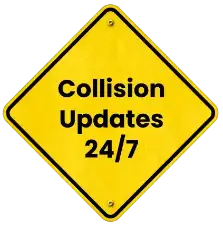
The Dangers Pedestrians and Cyclists Face along I-95


Pedestrians and cyclists encounter serious hazards near interchanges along I-95, particularly in urban and suburban regions where fast-moving traffic, complicated merging patterns, and insufficient infrastructure create unsafe conditions. This corridor, which runs along the East Coast, typically has high-speed vehicles, multiple lanes, and narrow spaces where drivers are concentrating on merging or exiting, making it challenging for pedestrians and cyclists to move through safely.
Moreover, many of these interchanges lack essential features like crosswalks, bike lanes, or clear signage, which only heightens the risks for those walking or biking.
In this guide, we will walk you through the dangers pedestrians and cyclists might encounter on I-95, how to prevent them and which steps to take in the aftermath of an accident. Finally, we will discuss how an experienced attorney can help you navigate this arduous process.
Dangers Pedestrians and Cyclists Face
The heavy traffic in these areas puts pedestrians and cyclists in constant danger from fast-moving vehicles, often making it extremely difficult for them to cross streets or navigate intersections safely. Merging traffic, especially at crowded on- and off-ramps, creates blind spots for drivers, making it harder for them to spot people walking or biking. This increases the risk of pedestrians and cyclists being hit by vehicles that may not have enough time to slow down or stop.
In many urban and suburban areas, interchanges are often poorly designed for pedestrians and cyclists. These locations may lack safe pathways, bridges, or tunnels for non-motorized travelers, forcing them to share lanes with vehicles. The absence of proper planning for non-motorized transportation makes these areas even more dangerous, particularly during peak traffic times when congestion creates additional hazards.
Here are some of the dangers affecting pedestrians and motorcycle drivers on I-95
-
High-Speed Traffic: Vehicles approaching or leaving interchanges often accelerate or decelerate rapidly, leaving little reaction time for pedestrians or cyclists.
-
Inadequate or Missing Infrastructure: Many I‑95 interchanges lack sidewalks, crosswalks, or bike lanes. Cyclists may be forced to use shoulder lanes or merge directly into fast-moving traffic. Pedestrians may cross at unsafe points, increasing exposure to vehicles.
-
Complex Merging and Lane Changes: Vehicles entering and exiting the highway are often focused on merging safely, not scanning for slower-moving road users. Pedestrians or cyclists navigating these areas face unpredictable vehicle behavior, including sudden lane changes and abrupt stops.
High Traffic Volumes: Interchanges often experience peak-hour congestion, with dense clusters of cars, trucks, and buses. High traffic density increases collision risk and can overwhelm small gaps pedestrians or cyclists attempt to use for crossing.
Safety Tips for Pedestrians, Cyclists, and Drivers
To improve safety for pedestrians and cyclists near interchanges, it’s essential to follow some key guidelines. Pedestrians should always use available crosswalks, overpasses, or sidewalks and avoid cutting across ramps where traffic is heavy. Cyclists should stay in designated bike lanes or multi-use paths, and make sure to wear high-visibility clothing and use lights, especially at night.
On a broader level, cities and transportation departments can make a significant impact by installing pedestrian bridges, widening shoulders, and adding fences to guide foot traffic safely. Drivers also play a crucial role, being extra cautious and expecting to encounter pedestrians and cyclists near interchanges, particularly in low-visibility conditions, can help prevent accidents and keep everyone safer on the road.
Steps to Take After a Pedestrian or Cyclist Accident
Knowing the right actions to take after an accident can safeguard your health and maintain your legal rights:
- Prioritize Safety: If possible, move to a safe area away from moving traffic to prevent further risk.
- Call Emergency Services: Dial 911 so that police and medical personnel can document the incident, provide care, and file official reports.
- Collect Evidence: Take clear photos of vehicle damage, skid marks, road conditions, and surrounding traffic. Gather contact details from any witnesses present.
- Record Injuries and Treatment: Seek medical help promptly, even for minor injuries, and keep thorough records of all treatments, doctor visits, and medications prescribed.
- Inform Your Insurance Company: Report the accident to your insurer without admitting fault, ensuring an accurate claim process.
Taking these steps will help ensure your safety, preserve important evidence, and protect your legal options moving forward.
One thing to keep in mind is that the statute of limitations for personal injury claims along I-95 varies by state, with most states offering between 2 to 4 years to file a lawsuit. In Maine, you have 6 years from the date of injury, while New Hampshire, Massachusetts, New York, Maryland, North Carolina, and South Carolina each provide 3 years. Rhode Island, Connecticut, New Jersey, Pennsylvania, and Delaware all offer 2 years for filing a claim.
Virginia follows a 2-year statute, and Georgia also has a 2-year limit. In Florida, the time frame is slightly longer, allowing you 4 years to file a personal injury lawsuit.
It’s crucial to act within these time limits, as failing to file your case within the statute of limitations can prevent you from pursuing compensation. Always consult with an experienced I-95 personal injury lawyer to ensure your case is filed in time.
Contact an I-95 Accident Attorney
Experiencing a pedestrian or bicycle accident on Interstate 95 can be physically, emotionally, and financially draining. The recovery process often involves challenging treatments, growing medical expenses, and the added stress of handling insurance or legal issues.
A committed I-95 accident lawyer can handle the legal challenges, from collecting evidence and meeting deadlines to negotiating with insurance companies, allowing you to focus on your recovery. With compassionate legal support, you won’t have to navigate this difficult process alone.
